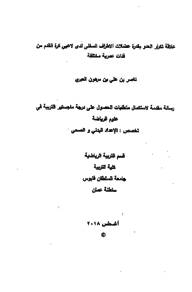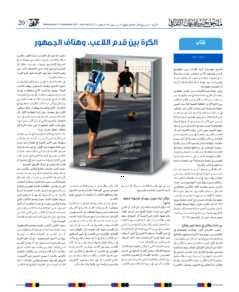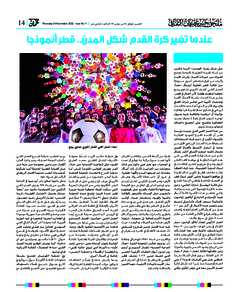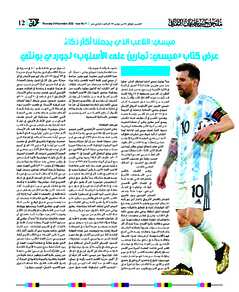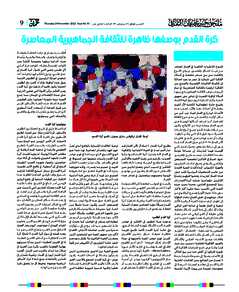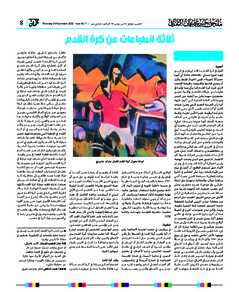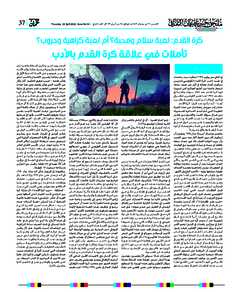Document
علاقة تكرار العدو بقدرة عضلات الأطراف السفلي لدى لاعبي كرة القدم من فئات عمرية مختلفة.
Publisher
جامعة السلطان قابوس
Gregorian
2018
Language
Arabic
Subject
English abstract
The study aimed to examine the relationship between the sprint in a straight line and the sprint with change of direction in the players belonging : to the pre-puberty and post. Through the vertical and horizontal jump tests in the youth ages 12-13 and 15-16 years, and determine which jump tests can predict performance in repeated sprint tests. To achieve this, the study was conducted on a sample of 51 players:(Age:13.674 1.76 length: 1.57 +0.12, weight: 50.50 + 9.38). All players performed the following tests: sprint in a straight line and sprint with change of direction (6 x 20 m) twice to verify the stability of the tests and Vertical and horizontal jump tests. One of the most important findings of the study is that the repeated sprint in a straight line and the repeated sprint with change of direction represent two independent capacities, both before and after growth. This study also showed that five jump test predicts 77.4% of the total time recorded in the repeated sprint in a straight line test in the pre- Peak height velocity group. For the post-peak velocity group, the study showed that countermovement The explosive index predicts together accounted for 65.8% of the total time recorded in the repeated sprint in a straight line test (p = 0.000). The physical and Coach study, which took into consideration these results, recommended the assessment and the development of the ability of sprint in a straight line and the sprint with change of direction.
Member of
Resource URL
Arabic abstract
هدفت الدراسة إلى التعرف على العلاقة بين تكرار العدو في خط مستقيم وتكرار العدو مع تغيير الاتجاه عند اللاعبين المنتمين إلى مرحلة ما قبل بلوغ ذروة سرعة الطول و بعده Peak (Height Velocity ( PHY وقدرة عضلات الأطراف السفلى ، من خلال اختبارات الوثب العمودي والأفقي عند الناشئين من اعمار 12-13 سنة و 15- 16 سنة و تحديد أي اختبارات الوثب التي تمكن من التنبؤ بالأداء في اختبارات تكرار العدو . ولتحقيق ذلك اجريت الدراسة على عينة مكونة من 51 لاعبا : (العمر: 1 . 76+ 13 . 67 ، الطول : 0 . 12+ 1 . 57 ، الوزن : 9 . 38+ 50 . 50 ) قام كل اللاعبين بالاختبارات التالية: اختبار العدو في خط مستقيم واختبار العدو مع تغيير الاتجاه (6x20 m) مرتين لتحقق من ثبات الاختبارات. واختبارات الوثب العمودي والأفقي . ومن أهم نتائج التي توصلت اليها الدراسة هو أن تكرار العدو في خط مستقيم وتكرار العدو مع تغيير الاتجاه يمثلان قدرتين مستقلتين سواء قبل بلوغ ذروة سرعة الطول أو بعده. كما أظهرت هذه الدراسة أن الوثب الخماسي يتنبأ بمقدار 77 . 4 % من الوقت الاجمالي المسجل في اختبار تكرار العدو في خط مستقيم في المجموعة المنتمية إلى مرحلة ما قبل بلوغ ذروة سرعة الطول. أما بالنسبة للمجموعة المنتمية لمرحلة ما بعد بلوغ ذروة سرعة الطول أظهرت هذه الدراسة أن الوثب بالتمهيد ومؤشر الانفجارية تتنبأن معا بمقدار 65 . 8 % من الوقت الإجمالي المسجل في اختبار تكرار العدو في خط مستقيم ( 0 .000=p). واوصت الدراسة المعد البدني والمدرب الأخذ بعين الاعتبار هذه النتائج في التقييم وتطوير قدرة تكرار العدو مع تغيير الاتجاه وتكرار العدو في خط مستقيم .
Category
Theses and Dissertations

